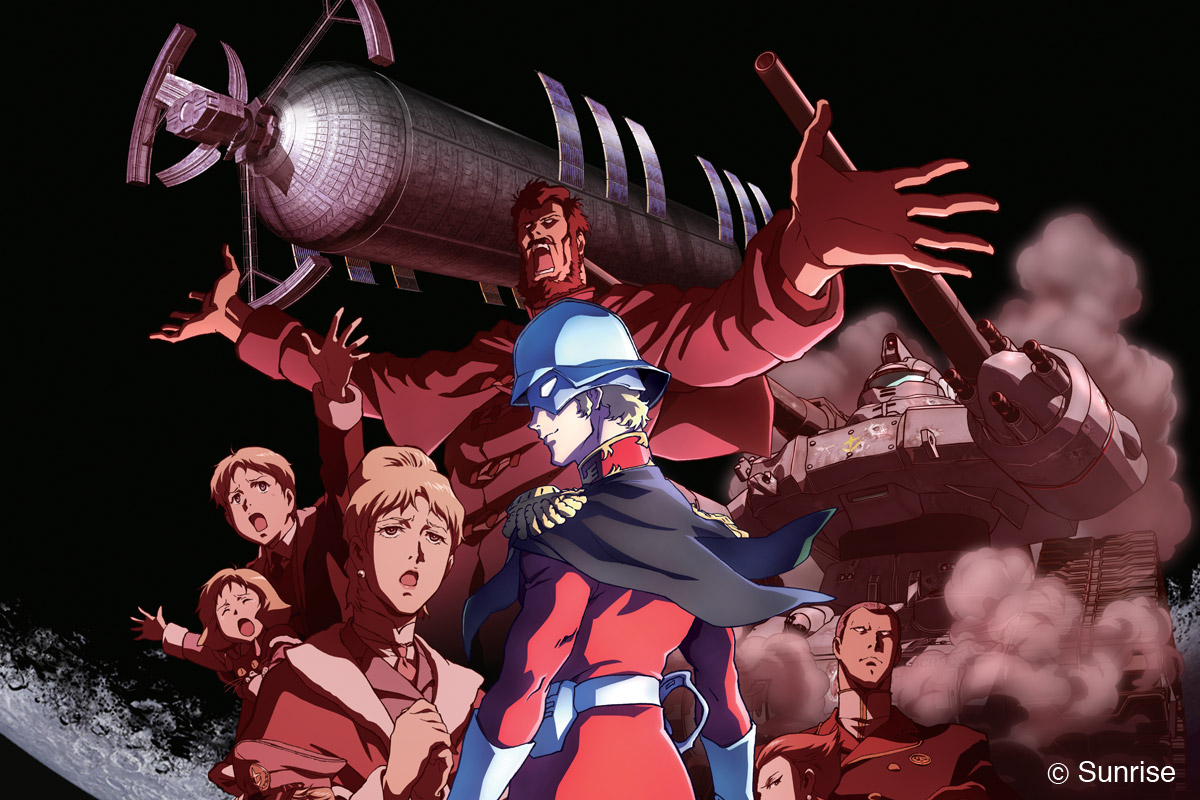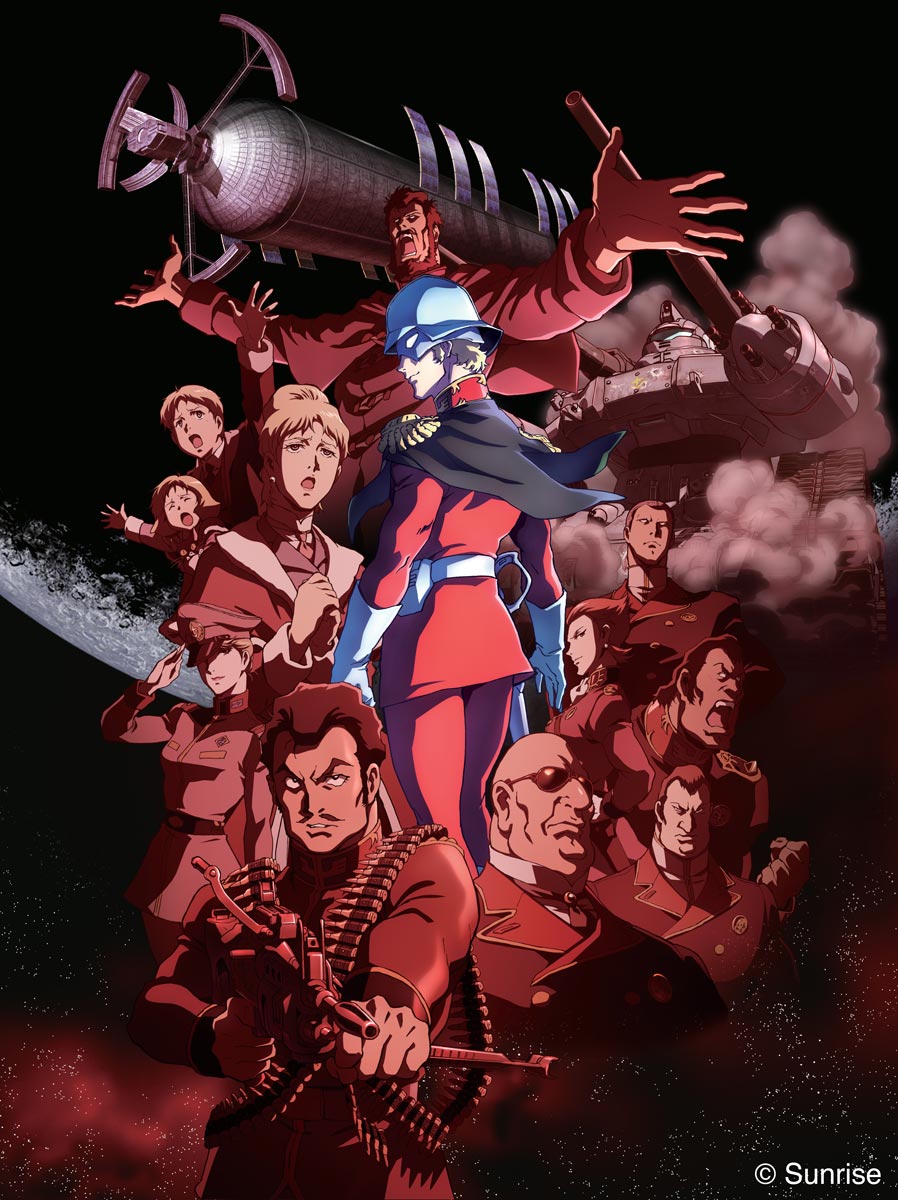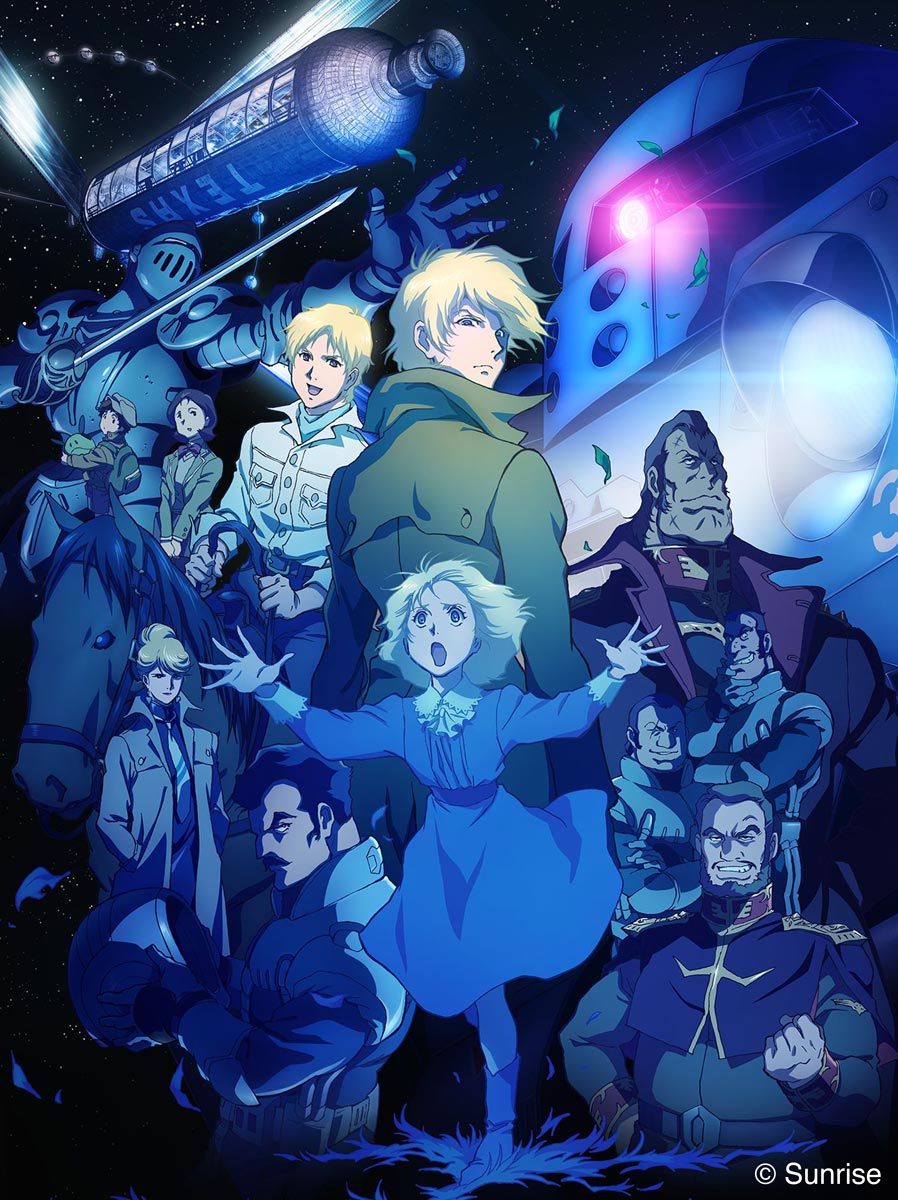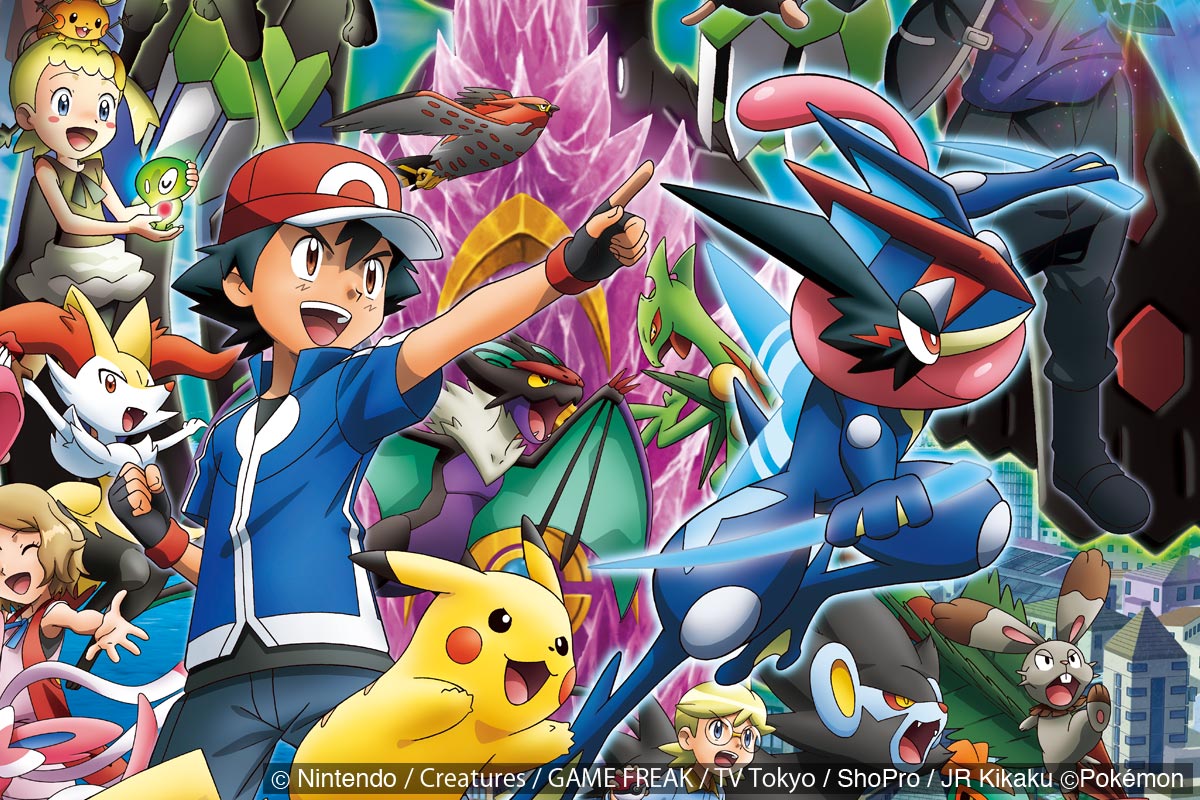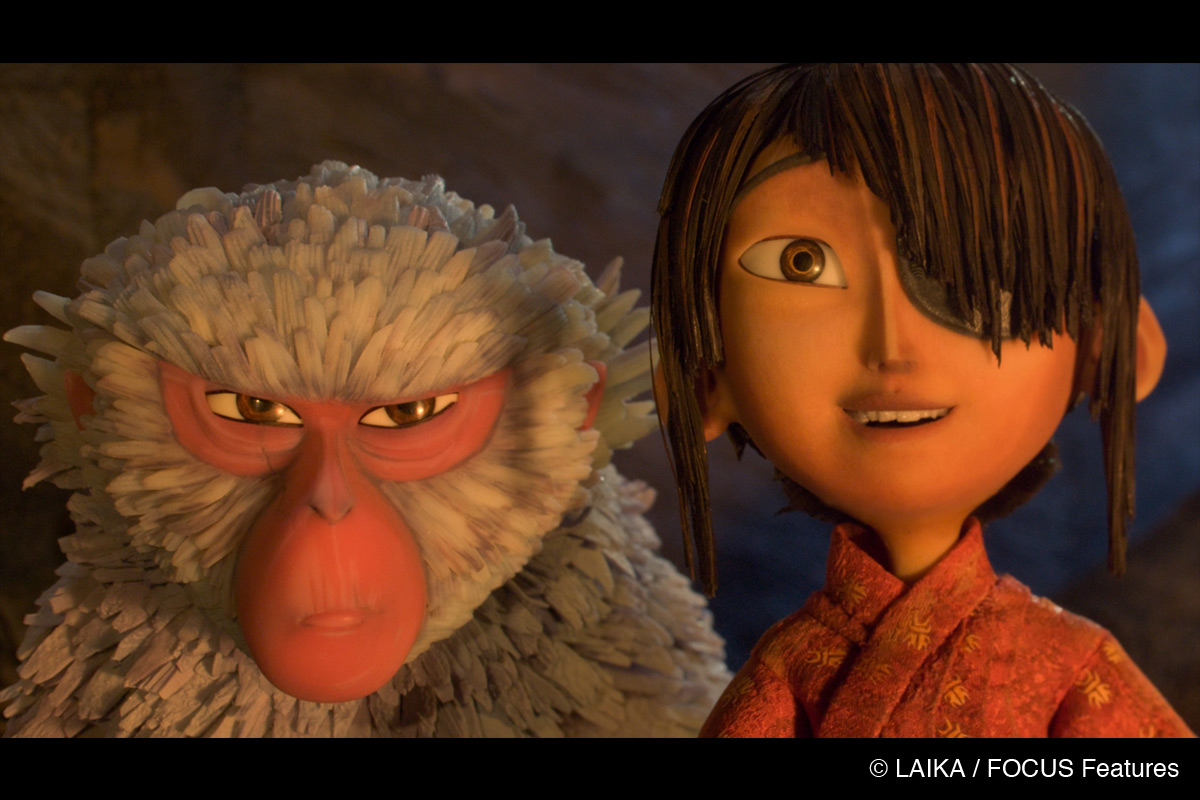Special interview
Animationweek (AW): Mr. Akitaka, you have participated in many animation works. Do you have any memorable works, for example, any works that you are very satisfied with the finished design, or had much difficulty during the production process?
Mika Akitaka (MA): If I chose from works that are related to Gundam, I personally think that I was able to do my best with Mobile Suit Gundam 0083 among the many works that I got involved. At that time, we got together with Mr. Hajime Katoki and Mr. Seiji Kawamori to create a rough design by saying “We want this kind of mobile suit.” Then, they say “Ok, good. Let’s use it.” I was very happy that one of my designs was picked up as it is without much corrections because this would mean that it would be part of the main pillar of the universe, and what’s great about this is that I could achieve this with Gundam. It was fun to think about the different designs of mobile suits while thinking about the universe of the work at the same time as the plastic model production.
AW: You mentioned that you think about the plastic model when you design mechanics, does a mechanical designer get involved in product development of a plastic model?
Osamu Taniguchi (OT): Yes, we do.
MA: Especially, Mr. Hajime Katoki, whom I just mentioned, actively gets involved in designs of plastic models. I do not do that much compared to him.
AW: How did you get involved in the development of plastic model in the past?
MA: It depends. I think this is not limited to Bandai but let’s say, there are only three sprues that can be used in a project of a plastic model from Gundam. If that is the case, the design staff from the development team in Bandai would think how they can place all the parts in three sprues. If they cannot fit every part into three sprues, to make a product, they would ask me a question like “We could place these parts in the sprues, if the design of the mobile suite will be like this. Would it be possible to change the design?” I would advise them by saying “If parts can fit with your re-design, how about with my new one? This design also enables us to layout all the parts into three sprues.” We talk and communicate these things.
AW: In Japanese animation works, there are many Science Fictions stories. I think that mechanical designers like you have contributed a lot to make these animation works more attractive. Do you feel any difference between the mechanical designs in Japanese animation and in Western mechanical designs, which we see in live-action films as well as animation? What is Japanese design for you? Have you learned something from Western mechanical designs?
MA: In my opinion, Japanese mechanical designs have to be drawn so this influenced the design and succeeded quite well in having a strong personality of mechanics, yet with a design as simple as possible. That kind of design has made drawing them less difficult. By omitting a part of mechanical design and simplifying lines, mechanics could have a strong personality and contain characteristics of “Anime (animation from Japan)”. I personally think that Gundam is this kind of design. Gundam’s design is a very straightforward design that puts a horn on a white helmet and has masks covering the eyes and mouth. Recently, 3D CG techniques is very advanced, they can deal with more complicated designs than before.
On the other hand, Western designs tends to have much more details, traditionally. They try to show the audience that it is real. I suppose it’s their culture. For example, if we draw a rough illustration of the Saturn Rocket in Apollo 13 (1995), it would be a shape of a sharp pencil. But, if you look at it closer, you can see very detailed ducts. That’s what makes it real for Western audience and they actually saw that thing flying with their own eyes. Otherwise, it can’t look real. You can see that sort of culture explicitly in STAR WARS (1977). It looks crowded but a shape is identifiable by its silhouette. I think this is the epoch-making point.
Lately, Japanese designs are also introducing those kind of designs gradually. But you know, if we design in too many details, it is hard to tell whether it’s animation or live action. So I think if that’s the case, it may be better to create live-action from the beginning. Having said that, it is not easy to realize a production of live-action films in Japan.
AW: Gundam in Turn A Gundam was designed by Syd Mead, not by a Japanese designer. Syd Mead’s design followed the iconic design of Gundam, but it gave me a different feeling. Do you think this kind of thing can come from the Western design philosophy that would design details without any omissions or different type of Western philosophy?
MA: I can’t say this well but what I can say is that I think this kind of idea would not come from the Japanese. I never met Syd Mead in person but he is like a master for mechanical designers like me. My honest opinion is: “It’s amazing to have Gundam designed by Syd Mead!”
AW: In which stage of the animation production process does a mechanical designer start to take part in a project in Japan?
MA: It depends on the project. In the case of the Gundam series by Sunrise, designing Gundam is the starting point of production. It’s the case for Gundam The Origin as well.
OT: In principal, we create a specification from a script, and we ask a mechanical designer “As there is going to be this kind of scene, character and mobile suites, could you please design this?” Or, we may discuss something like “We want this kind of Gundam. Let’s make this kind of character” at the proposal stage. Then we ask a mechanical designer to design something to be the base of a design as a rough image illustration. After that, we go through a number of meetings to complete a design. We have a case where we adjust designs like “Let’s make this part like this” to the very last minute of the storyboard stage, or we decide at the quite early stage and do not change it further.
In case of Gundam The Origin, we are using 3D CGI. We actually ask 2D animators to draw a rough animation by hand and then we create the CG motion to match it. So it is technically possible to change a design to the very last minute before starting the CG animation process. However, we need to create a CG model beforehand so that in general we kind of create the CG model in parallel with drawing a key layout. Hence in any case we try to decide a design by then.
MA: Mobile suits are CGI in the animation. So does it mean that the 2D animators visualize the final animation before adding action to the CG models?
OT: We ask 2D animators to draw the rough key-layout for the CG staff. So to make CG animation, CG animators only need to look and follow the rough key layout and then, they add the animated actions, which corresponds to in-betweens. We use not only CGI but also pencil-drawn keyframes to animate the mobile suits. For example, hand-drawn keyframes can be used for scenes like bust-up compositions, scenes with details, or a posing image. Effects also could be in CG or in hand-drawing. We try hard to provide the best 2D animation to our audience by utilizing the good points of CGI and hand-drawn.
AW: Could you please share with us if you have any tips for being a successful mechanical designer or any useful experiences that has helped your work?
MA: In my opinion, it is probably to take on any works that you are offered. I kind of think it is a little bit of a shame when I see some people who decline projects that are offered in these days. There are some cases that you cannot accept any works under the certain circumstances but any work you did would help you in later days. I personally think that every project which comes to me is good for me. Every part of your work, including the design process and the finished design, remain as your work, and people who are involved in the same work remember you.
Jobs would never come to you whilst keeping in silence. The best is to accept works as much as possible and produce a reliable result. Clients who ask you for a job probably do not worry whether the designed work are being sold well or not. The more important thing is to be known with your work as “what kind of work does this person design?” For that, it is obviously important to accumulate experience based on your daily practice, but the most important thing is to accumulate your work going out into the world. The bottom line is not to miss any chance that you could get your work out there.
Synopsis
[row][column size='1/3']
[column size='2/3']
Episode 1: Blue-Eyed Casval
Universal Century 0068, Side 3 – The Autonomous Republic of Munzo. Zeon Zum Deikun, preaching the reformation of humanity through advancement into outer space, has been attempting to declare Munzo’s complete independence from the Earth Federation government. Suddenly, he collapses and dies in the middle of a speech to the Diet. Upon Deikun’s death, his aide Jimba Ral begins spreading conspiracy theories about the Zabi family. But despite his efforts, the Zabi family, led by Degwin Sodo Zabi, intensifies its secret manoeuvring to seize control of Side 3. As we witness for the first time the untold chaotic history of the Universal Century, Casval and Artesia, Deikun’s orphaned children, must face destinies just as tumultuous as the era itself.
[/column]
[/row] [row]
[column size='1/3']
[column size='2/3']
Episode 2: Artesia’s Sorrow
Universal Century 0071. Three years have passed since the escape from Side 3’s Autonomous Republic of Munzo. Casval and Artesia, the orphaned children of Zeon Zum Deikun, have fled to Earth along with Jimba Ral and taken refuge in the household of Teabolo Mass. They now live quiet lives under the names Édouard and Sayla. However, they are once again being targeted by the evil schemes of the pursuing Zabi family. Meanwhile, Side 3 has been renamed to the Autonomous Republic of Zeon. The Zabi family have seized power, and as they consolidate their system of control, they embark on the development of a new weapon called the mobile worker in order to resist the Earth Federation Forces.
[/column]
[/row] [row]
[column size='1/3']
[column size='2/3']
Episode 3: Dawn of Rebellion
Universal Century 0074. Since leaving the Texas Colony, Édouard Mass has camouflaged his identity and enrolled in the Autonomous Republic of Zeon’s Space Defense Military Academy under the name of Char Aznable. He develops a friendship with his classmate Garma, a scion of the Zabi family. Gradually the two become admired by the other students. Then, in Universal Century 0077, the young at last rise up in arms and begin the fight for independence against the Earth Federation’s security forces. This rebellion, however, also marks the beginning of Char’s spectacular scenario of revenge… Now, the gears of history are turning!
[/column]
[/row]



